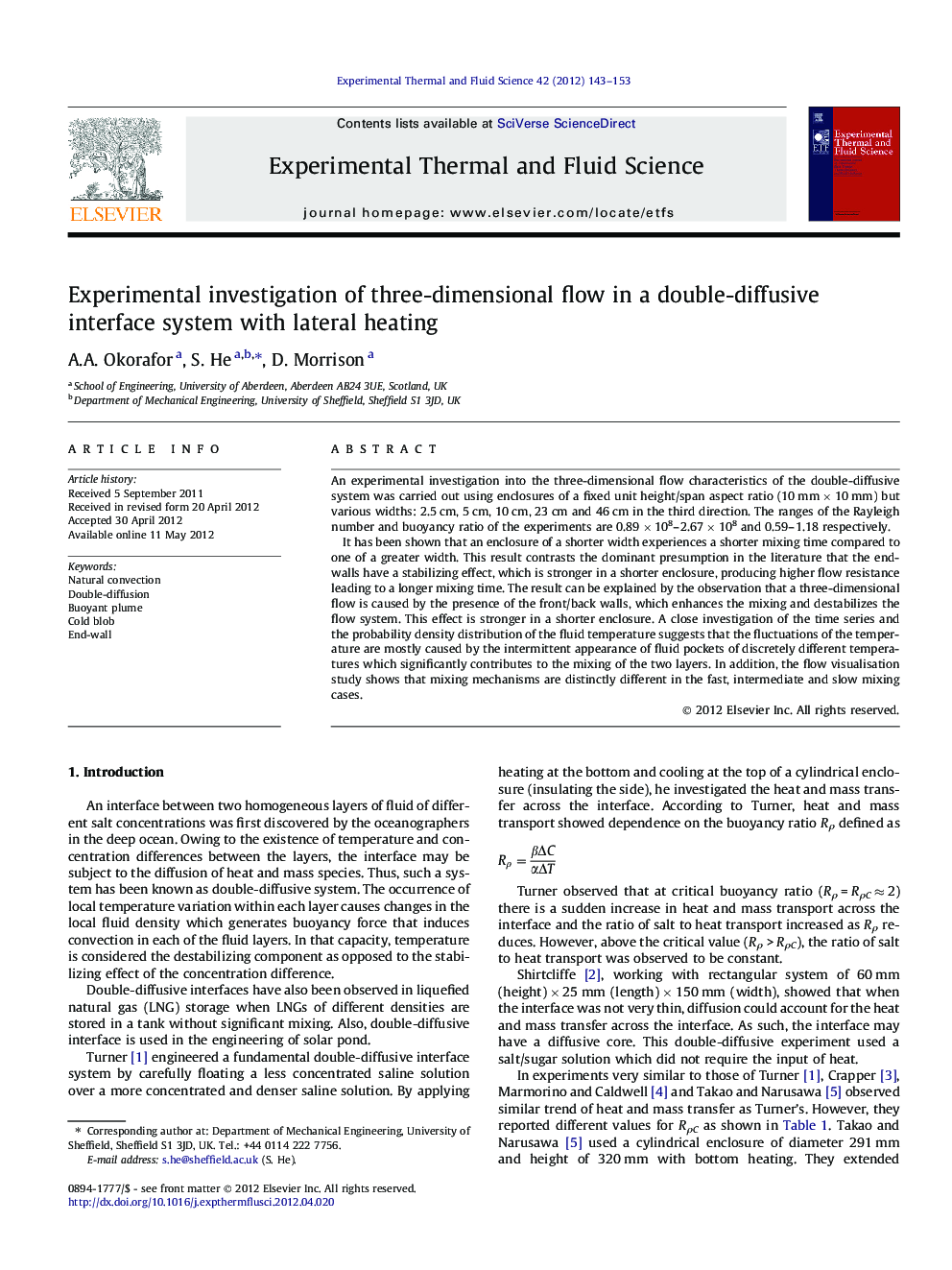| کد مقاله | کد نشریه | سال انتشار | مقاله انگلیسی | نسخه تمام متن |
|---|---|---|---|---|
| 652001 | 1457434 | 2012 | 11 صفحه PDF | دانلود رایگان |

An experimental investigation into the three-dimensional flow characteristics of the double-diffusive system was carried out using enclosures of a fixed unit height/span aspect ratio (10 mm × 10 mm) but various widths: 2.5 cm, 5 cm, 10 cm, 23 cm and 46 cm in the third direction. The ranges of the Rayleigh number and buoyancy ratio of the experiments are 0.89 × 108–2.67 × 108 and 0.59–1.18 respectively.It has been shown that an enclosure of a shorter width experiences a shorter mixing time compared to one of a greater width. This result contrasts the dominant presumption in the literature that the end-walls have a stabilizing effect, which is stronger in a shorter enclosure, producing higher flow resistance leading to a longer mixing time. The result can be explained by the observation that a three-dimensional flow is caused by the presence of the front/back walls, which enhances the mixing and destabilizes the flow system. This effect is stronger in a shorter enclosure. A close investigation of the time series and the probability density distribution of the fluid temperature suggests that the fluctuations of the temperature are mostly caused by the intermittent appearance of fluid pockets of discretely different temperatures which significantly contributes to the mixing of the two layers. In addition, the flow visualisation study shows that mixing mechanisms are distinctly different in the fast, intermediate and slow mixing cases.
► We study the 3D features and the end-wall effect of a double-diffusive system.
► The shorter width of the test section, the shorter is the mixing time.
► This result contrasts the theory that the end-walls have a stabilizing effect.
► Our result can be explained by the observation of 3D flows next to the end walls.
► Temperature fluctuations are linked to the intermittence of the unsteady flow.
Journal: Experimental Thermal and Fluid Science - Volume 42, October 2012, Pages 143–153